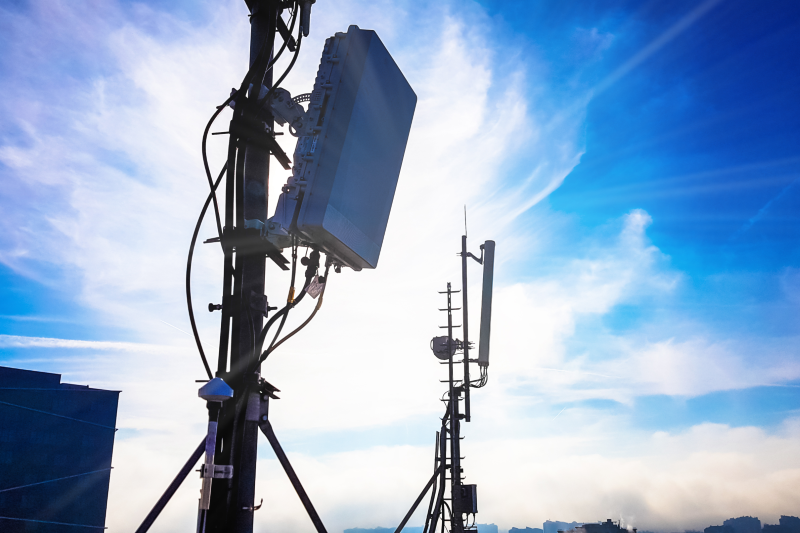Home


Resource Center

For businesses, hospitals, and educational institutions, cell signal repeaters can be a blessing. These systems are a dependable solution for capturing and rebroadcasting cellular signal within buildings — Improving reception for everyone inside. When properly installed and configured, repeaters can put an end to poor call quality, slow data speeds, and day-to-day disruptions caused by poor cellular signal.
Below are some tips, methods, and best practices to ensure you get the most from a signal repeater system.
Understand Signal Frequencies

When first starting a signal repeater installation, it’s important to pay close attention to cellular carrier frequencies. Some repeaters only enhance signal for specific carriers, so the problem might be that the device doesn’t benefit from that particular technology.
A good way to check for this is by doing a thorough site survey with a signal meter or Cellular Network Scanner. Doing so can also provide details on which carrier’s signals are available and where they’re coming from. In some situations, commercial buildings may only need a repeater for one specific carrier, but this is rare.
Other repeaters are capable of providing signals to all devices, regardless of frequency and carrier. These are referred to as carrier-agnostic repeaters. In most commercial settings, there are multiple people coming to and from the building each day. Faculty, staff, students, customers, clients — there will be a variety of people using devices across several different carriers. Because of this, it’s a good idea to choose a repeater that works on all carriers.
Choose the Right Antenna

The antenna used in a cell signal repeater system is typically referred to as a donor antenna. It’s the component that communicates with the cell tower—capturing overhead signal and transmitting it to an amplifier. Most of these are stand-alone antennas, and they’re connected to the repeater by coaxial cable.
Picking the right antenna from the beginning means the difference between a painful installation and a flawless one. To that end, there are two antenna types for most commercial cell phone repeater installations:
- Directional antennas are designed to point directly at a cell tower, receiving signals from one direction. This type of antenna is best used in instances where the signal outside of the building is either too weak or too strong. If signal strength for the installation is below -80dBm or over -45dBm, consider using a directional antenna.
- Omnidirectional antennas receive cell signals from all directions. In situations where the signal outside the building is sufficient, an omnidirectional antenna is the best option. These antennas are especially useful in situations where the building is obstructing signal. As such, they’re often the best choice for commercial repeater installs.
Choosing the right antenna will help the entire installation process go more smoothly. Be sure to complete a thorough site survey to determine where the signal is needed most and where to place the antenna.
Practice Effective Cabling

When it comes to the cabling aspect of installing a repeater system, many often overlook the importance of it and end up wondering why the system isn’t functioning as well as it should be. During this part of the installation, there are certain practices and methods installers should adhere to in order to get the most out of the equipment.
Use High-Quality Cable
Some kits offer everything you need, but they may not necessarily include the best cabling option. The wrong type of cable or cable of low quality can contribute to signal loss. For example, RG-6 cable is a better choice than RG-59-Mini, and LMR-400 cable is superior to RG-58 cable. When it comes to WilsonPro kits, 1/2″ coax (.500″ coax) is the best cable for cellular repeater system installs.
Use Shorter Cable Lengths
When running the cable for installation, be sure to measure effectively and use the shortest possible length. Signal loss and degradation worsen with cable length.
Maintain Space Between Donor and Broadcast Antennas
If both antennas are too close together, there’s a good chance the signal will end up oscillating. In other words, a feedback loop may be created. If the installation can’t accommodate adequate space between the antennas, consider installing a shield between them to prevent antenna cross-talk.
Plan on Additional Broadcast Antennas
Larger commercial buildings, especially ones with multiple levels, will likely require multiple broadcast antennas to provide an adequate signal to every location within. In some instances, installers can use a splitter and run a cable to additional broadcast antennas to help accommodate coverage. Keep in mind, however, that splitting the cable also effectively splits the signal, so use them wisely.
Try an Inline Repeater

If you followed these tips and still have trouble with signal strength, inline repeaters can help. For extremely long cable runs where signal degrades considerably, adding a repeater in between two points improves throughput considerably.
Keep in mind that you can also use an inline repeater between the donor antenna and the amplifier. They’re perfect for keeping the signal strong when the installation requires antenna placement that’s significantly far from the amplifier and broadcast area.
Let WilsonPro Help

In addition to the methods listed here, there are numerous ways to optimize a cell phone signal repeater system. It’s important to remember that every commercial repeater installation is different. An inline repeater might fix a signal problem in one situation, while a custom-built solution may solve another.
At WilsonPro, we offer a wide range of cellular signal repeaters for a variety of applications. We also design custom, carrier-agnostic solutions for businesses, educational institutions, hospitals, and other commercial locations.
If you need some assistance with your next commercial repeater installation, don’t hesitate to get in touch with us.

